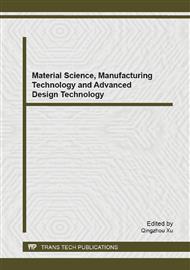[6]
demonstrated that BDNF mRNA expression is largely controlled by Ca2+ signal evoked via Ca2+ influx through NMDA receptors (N-methyl-D-aspartate-receptor) or VGCCs (voltage-gated calcium channels). Therefore, β-TCP decomposition probably led to the Ca2+ influx in the local condition which would influence the BDNF expression during the regeneration. Indeed, the local BDNF contents and the BDNF mRNA expressions in the distal stumps were both elevated in the PDLLA/β-TCP group compared with the PDLLA group (Fig. 1). Meanwhile, the SFI value showed significant difference among the 2 groups at 35 days after injury. The SFI were relatively higher in PDLLA/β-TCP group (-39%) than that in PDLLA group (-51%) (Table 1). Fig. 1 Sciatic functional index in sciatic nerve-transected rats bridged with conduits (left chart) and the BDNF expression in the distal stumps (right chart). (* P < 0. 05, * P < 0. 01) Table 1 pH value of the composite extract, the calcium ion content in the conduits and the BDNF contents in the conduits. (* P < 0. 05, * P < 0. 01) Items pH value of the extract Calcium ion content in the conduits (μg/mL) BDNF content in the conduits (ng/mL) PDLLA 6. 85 0. 55 37. 8 ± 3. 5 PDLLA/β-TCP 7. 02* 1. 315* 46. 3 ± 2. 1* Fig. 2. Histological analysis of rats' regenerated sciatic nerve. A is for the normal nerve, B is for the PDLLA conduits bridged nerve, and C, D are for the PDLLA/β-TCP bridged nerve. At 35days after surgery, the regenerated nerve had grown cross through the 10 mm gap. H and E staining were performed to investigate the newborn nerves of each group. For group PDLLA/β-TCP, the regenerated nerve fibers dispersed densely and the myelinated fibers had a compact and uniform structure (Fig. 2 C, D). Conclusion In previous studies, β-TCP is a good biodegradable ceramic material that could supply a large quantity of calcium ion as well as scaffold structure for bone regeneration. Therefore, along with the biodegradable of PDLLA/b-TCP, β-TCP decomposition not only improved the acid environment from degradation of PDLLA, but also elevated the local calcium ion content. Furthermore, the Ca2+ influx in vivo promoted the BDNF synthesis and secretion. On the whole, PDLLA/b-TCP composites facilitate the sciatic regeneration through modifying the microenvironment in the conduits. Acknowledgment This work was supported by the National Basic Research Program of China (2011CB606205), the Key Grant Project of Chinese Ministry of Education (313041) and the Fundamental Research Funds for the Central Universities (2012-IV-069). Refference.
Google Scholar
[1]
T. Yu, C.F. Zhao, P. Li, G.Y. Liu, M. Luo, Neural Regeneration research, J. PLoS One. Commun. 8 (2013) 1673-1687.
Google Scholar
[2]
J.H.A. Bell, J.W. Haycock, Tissue Eng. Part B-reviews, J. Commun. 18 (2012) 116-128.
Google Scholar
[3]
W. Huang, R. Begum, T. Barber, V. Ibba, N.C.H. Tee, M. Arastoo, Q. Yang, L.G. Robson, S. Lesage, T. Gheysens, N.J.V. Skaer, D.P. Knight, J.V. Priestley, Biomaterials, J. Commun. 33 (2012) 59-71.
DOI: 10.1016/j.biomaterials.2011.09.030
Google Scholar
[4]
Y. Zhang, F.H. Gu, J. Chen, W.X. Dong, Brain Res, Commun. 1366 (2010) 141-148.
Google Scholar
[5]
Hughes P, Beilharz E, Gluckman P, Dragunow M, Neuroscience, J. Commun. 57 (1993) 319-328.
Google Scholar
[6]
M. Tsuda, Neurochem. Int, J. Commun. 29 (1996) 443-451.
Google Scholar


